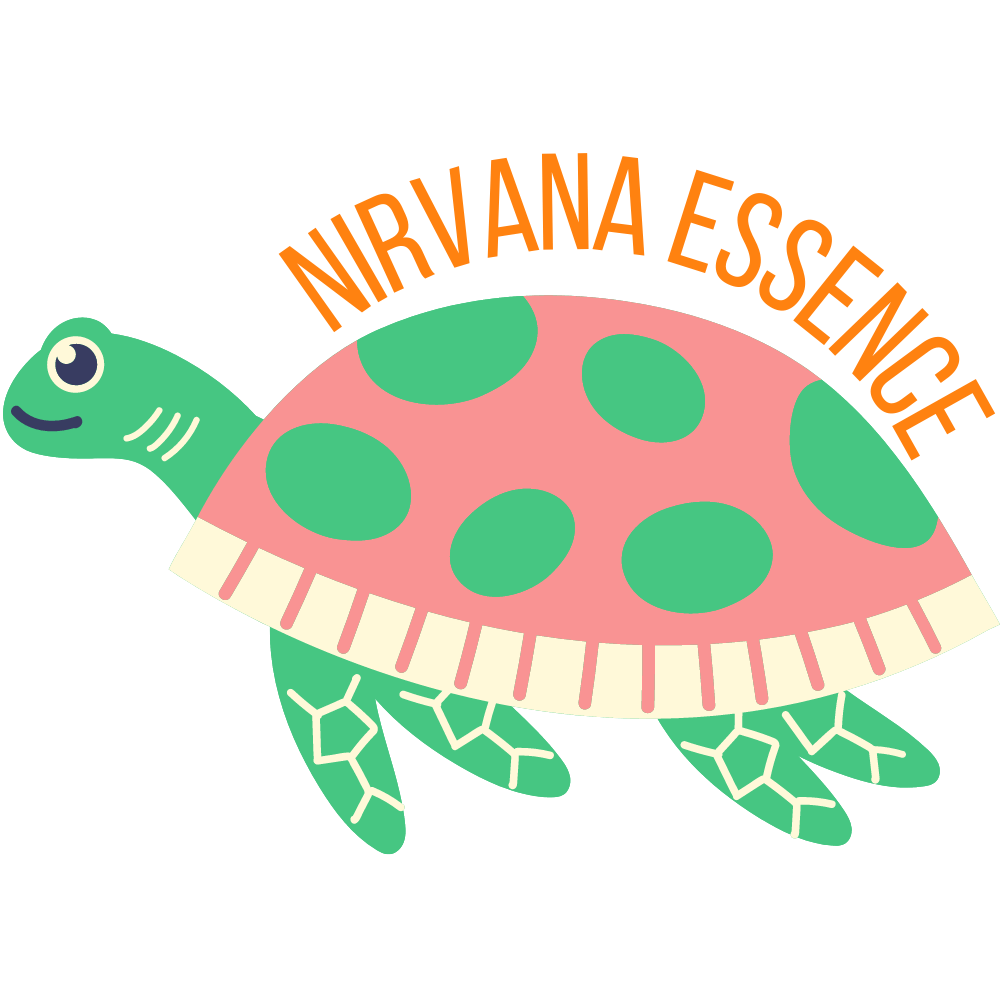Introduction to the Diversity of Yoga
Welcome to the amazing world of Yoga, a practice that goes beyond the physical poses to offer enduring peace and harmony. Whether you’re a seasoned yogi or just a beginner, the landscape of yoga may seem incredibly varied and vast. And you’re right, it is! Each type of yoga has its unique elements that offer a variety of benefits. With the many different styles of yoga to explore, the journey to finding your favorite can be an adventure in itself.
Understanding Yoga: More Than Just a Physical Practice
Yoga is a practice steeped in history and tradition. It’s much more than just a style of exercise. It’s a holistic discipline that combines physical postures, breath control, meditation, and ethical principles. While yoga may help improve physical fitness, its benefits extend to mental and spiritual well-being as well. In fact, the benefits of yoga are so comprehensive that they’re increasingly recognized by modern medicine and science.
The 13 Major Styles of Yoga
Now that we understand the broad benefits yoga offers, let’s delve into the 13 types of yoga explained. Remember, every type of yoga has its unique offering, so keep an open mind as you explore these different styles.
Vinyasa Yoga: The Dance of Breath and Movement
For those looking for a dynamic, rhythmic, and cardio-intensive yoga style, Vinyasa Yoga fits the bill perfectly. Known as ‘flow yoga,’ Vinyasa is characterized by the fluid transition from one pose to the next, akin to a carefully choreographed dance. Each movement is synchronized with breath, creating a seamless and invigorating yoga experience.
In a Vinyasa yoga class, the sequence of poses often differs, allowing for creativity and variation. The hallmark of Vinyasa yoga is the ‘Vinyasa flow,’ a series of poses that include the plank, chaturanga dandasana, upward-facing dog, and downward-facing dog. This sequence is sprinkled throughout the practice, promoting strength and endurance.
The continuous motion of Vinyasa Yoga fosters heat within the body, which aids in the release of toxins and promotes flexibility. Additionally, the close link between movement and breath in Vinyasa Yoga enhances mindfulness and concentration. Regular practitioners often notice an improvement in their cardiovascular health, mental resilience, and overall mood.
Ashtanga Yoga: The Path of Internal Cleansing
Derived from the ancient yoga text, the Yoga Korunta, Ashtanga Yoga is a structured and intense style of yoga that offers practitioners a robust workout and an internal cleansing pathway. An Ashtanga yoga class is not for the faint-hearted. It involves executing a fixed sequence of poses that are synchronized with breath and gaze points.
Ashtanga Yoga comprises six series, and each one needs to be mastered before moving to the next. The first series, also known as the Primary Series, focuses on aligning the body and detoxifying the system. Ashtanga Yoga’s rigor and structure make it an excellent option for those who prefer a challenging, routine-based yoga style.
Beyond the physical realm, Ashtanga Yoga is also a spiritual journey. It incorporates the eight limbs of yoga, ranging from ethical principles to breath control, and from sensory withdrawal to meditation and enlightenment. The ultimate goal is to purify the mind and body, creating a harmonious and vibrant internal state.
Yin Yoga: Embrace the Slow and Steady
As the name implies, Yin Yoga is all about embracing the slower, softer side of your practice. It is an ideal style of yoga for those seeking to cultivate mindfulness and introspection, as well as increase flexibility.
A typical Yin Yoga class involves holding poses for a prolonged period, usually between 3 to 5 minutes. These mainly floor-based poses target the deeper connective tissues in your body, such as the ligaments, tendons, and fascia, and help improve the range of motion, particularly around the hips, pelvis, and lower spine.
Given its introspective nature, Yin Yoga also provides the perfect platform to practice meditation and explore the mind-body connection. The long hold poses become a form of moving meditation, teaching you patience, acceptance, and tranquility. Regular Yin Yoga practice can help reduce stress, enhance mental clarity, and induce a state of deep relaxation.
Restorative Yoga: The Art of Active Relaxation
Restorative Yoga, another form of yoga that embraces slowness, offers a soothing and nurturing practice that encourages deep relaxation. Unlike Yin Yoga, which targets deep tissues, Restorative Yoga is about comfort and ease, employing props like blankets, bolsters, and blocks to fully support the body in each pose.
Restorative Yoga classes are typically slow-paced, featuring only a handful of poses that are held for an extended period, often up to 10 minutes. This approach allows you to release deeply ingrained tensions, both physical and emotional.
The benefits of this style of yoga are multifold. Besides promoting physical relaxation, Restorative Yoga can also be an effective tool to cope with stress and anxiety. It can foster mindfulness, improve sleep quality, and nurture an overall sense of well-being.
Bikram Yoga: Hot Yoga Born in Hollywood
Bikram Choudhury developed Bikram Yoga in the 1970s, which is often referred to as a form of ‘Hot Yoga.’ It is a system of yoga practiced in a room heated to 105°F with a humidity of 40%. Each class follows a series of 26 postures and two breathing exercises, precisely designed to deliver total health through the balancing and strengthening of every system in the body.
Bikram Yoga is unique because every class follows the same sequence, making it an excellent choice for beginners who like structure and want to practice safely under high heat conditions.
Power Yoga: Strength and Flexibility with a Cardio Kick
As a vigorous fitness-based approach to Vinyasa style yoga, Power Yoga became popular in the mid-’90s. It shares many similarities with Ashtanga Yoga but does not stick to a set series of poses. It varies from class to class, depending on the yoga teacher’s preference.
In Power Yoga classes, you are likely to work up a sweat, build strength, improve flexibility, and possibly even burn calories. It is a fantastic style of yoga if you are looking for a more vigorous workout and enjoy the flowing style of Vinyasa but want more of a workout.
Kundalini Yoga: Awakening the Dormant Energy
Kundalini Yoga is a unique blend of physical postures, breathing techniques, mantra chanting, meditation, and spiritual exploration. Named after the term ‘Kundalini,’ which refers to the dormant spiritual energy at the base of the spine, this style of yoga aims to awaken and channel this energy through the seven chakras of the body.
A typical Kundalini Yoga class involves dynamic movement sequences, conscious breathing, chanting mantras, and meditating to elevate the spirit. The practice is known to increase vitality, balance the mind, body, and spirit, and induce a sense of inner peace.
Iyengar Yoga: The Detail, Precision, and Alignment
Named after its founder, B.K.S. Iyengar, this form of yoga emphasizes detail, precision, and alignment in the performance of yoga postures (asanas) and breath control (pranayama). The development of strength, mobility, and stability is gained through the asanas.
In an Iyengar Yoga class, you’ll use props like blocks, belts, and bolsters to perfect your pose and prevent injury, making it accessible and safe for all ages and abilities. Attention is given to the minutest detail, and poses are held for an extended period to maximize the benefits and allow deep penetration into the pose.
Iyengar Yoga doesn’t just focus on the physical. It’s also about spiritual and emotional wellbeing, with its meditative and reflective aspects. The detailed precision and slow, steady pace of this form of yoga make it a good starting place for beginners.
Hatha Yoga: The Classic Approach to Balance
Hatha Yoga, one of the most common types of yoga, serves as a great starting point for beginners. The term ‘Hatha’ translates to ‘force’, reflecting the physical nature of this style. It offers a balanced introduction to the fundamental yoga asanas (poses), helping practitioners develop strength, flexibility, and balance.
In a typical Hatha Yoga class, you’ll find a slower pace where each pose is held for a longer duration. This method provides ample time for beginners to grasp each pose’s mechanics, align their bodies correctly, and breathe deeply. The deliberate pace of Hatha yoga also encourages mindfulness as you learn to focus on your body and breath simultaneously.
Hatha Yoga is not just about perfecting poses. It’s an exploration of the connection between your body and mind, achieved through the integration of asanas with pranayama (breathing exercises) and meditation. This unity cultivates inner peace, reduces stress, and enhances mental clarity, demonstrating the profound benefits of yoga beyond the physical realm.
Prenatal Yoga: Embracing Change for Two
Prenatal Yoga is a multifaceted approach to exercise that encourages stretching, mental centering, and focused breathing. It’s a safe, simple, and natural method of preparing the pregnant body for childbirth by developing flexibility and building strength.
Prenatal Yoga classes are specially designed to cater to the physical changes and challenges pregnant women face. The poses are modified to ensure safety and comfort for both mother and baby. It also includes training in concentration and breath that will be immensely beneficial during labor.
Aerial Yoga
In Aerial Yoga, practitioners perform poses and sequences while supported by a hammock suspended from the ceiling. This form of yoga can help deepen stretches, increase flexibility, and improve balance. It’s a fun and creative style of yoga that can provide a unique twist to your regular yoga practice.
Anusara Yoga: Align With Your Heart
Anusara Yoga, developed by John Friend in 1997, is a modern school of yoga with a spiritual philosophy centered on Tantric philosophy and the intrinsic goodness of all beings. It is a system that focuses on the Universal Principles of Alignment, an innovative system of biomechanics that draws on the graceful and artistic side of yoga.
This yoga style encourages students to express themselves through the poses to their fullest ability. Each class generally begins with a devotion or intention setting, and the postures are designed to open the heart and let your inner goodness shine through.
Sivananda Yoga: Holistic Practice for Wellness
Founded by Swami Vishnudevananda, a disciple of Swami Sivananda, this form of yoga follows five basic principles: proper exercise (Asanas), proper breathing (Pranayama), proper relaxation (Savasana), proper diet (vegetarian), and positive thinking and meditation (Vedanta and Dhyana).
A typical Sivananda yoga class involves chanting, pranayama, a standard set of 12 postures, and deep relaxation. It aims to promote overall wellness, reduce stress, and improve the practitioner’s physical and mental health.
Jivamukti Yoga: Enlightenment through Compassion to All Beings
Founded in 1984 by Sharon Gannon and David Life, Jivamukti Yoga is a path to enlightenment through compassion for all beings. Classes are challenging, combining a vigorous physical practice with an equally strong foundation in ancient spiritual teachings of yoga.
Every Jivamukti class integrates a theme, which can include aspects related to the focus of the month. This could range from discussions on yoga philosophy, chanting, meditation, and pranayama. If you’re seeking a practice that promotes eco-friendly, vegan lifestyle, and social activism, Jivamukti Yoga is your calling.
Karma Yoga: Yoga of Action
Karma Yoga, often referred to as the ‘Yoga of Action,’ is a path of selfless service. It’s about acting without being attached to the fruits of one’s deeds. It teaches you to act selflessly, serving others as a spiritual practice.
Although it is not a physical style of yoga, it is one of the core spiritual paths outlined in the Bhagavad Gita—a holy scripture of Hinduism. It involves the dedication of all work as a prayer to the Divine. By working in this spirit, one can attain the state of liberation or nirvana.
Acro Yoga
Acro Yoga combines yoga, acrobatics, and Thai massage into a dynamic practice between partners. This form of yoga encourages trust, connection, and playfulness. While Acro Yoga can seem intimidating at first, with the right guidance and a supportive yoga community, it can be a lot of fun and highly rewarding.
Now that we’ve started exploring the different styles of yoga, let’s pause and reflect. Each type of yoga is a pathway to improved physical, mental, and spiritual well-being, and each style offers a unique approach to this journey. It’s essential to understand the different types of yoga so you can choose a practice that resonates with you.
Also check out –
FAQs
Q: What are the different types of yoga?
A: There are 13 types of yoga that you can explore, including Hatha yoga, Vinyasa yoga, Ashtanga yoga, Bikram yoga, and Kundalini yoga.
Q: Which type of yoga is best for beginners?
A: Hatha yoga is a great choice for beginners as it focuses on basic poses and breathing techniques.
Q: What are the benefits of practicing yoga?
A: Yoga helps improve flexibility, build strength, reduce stress, increase mindfulness, and promote overall well-being.
Q: What is a yoga pose?
A: Yoga poses, also known as asanas, are different positions and movements that are practiced during a yoga class.
Q: How can I find a yoga class near me?
A: You can search online for yoga studios or community centers in your area that offer yoga classes.
Q: What is the difference between different types of yoga?
A: Each type of yoga has its own focus, pace, and style. Some styles are more intense and dynamic, while others are slower and more relaxing.
Q: Do I need a yoga mat for practicing yoga?
A: Yes, a yoga mat provides cushioning and grip during yoga poses, making it easier and safer to practice.
Q: Can anyone practice yoga?
A: Yes, yoga is for everyone. It can be modified to suit different abilities, ages, and fitness levels.
Q: What are the most popular styles of yoga?
A: Some of the most popular styles of yoga include Hatha yoga, Vinyasa yoga, and Bikram yoga.
Q: Is there a best type of yoga?
A: The best type of yoga depends on your personal preferences and goals. It’s important to try different styles to see which one resonates with you the most.




















